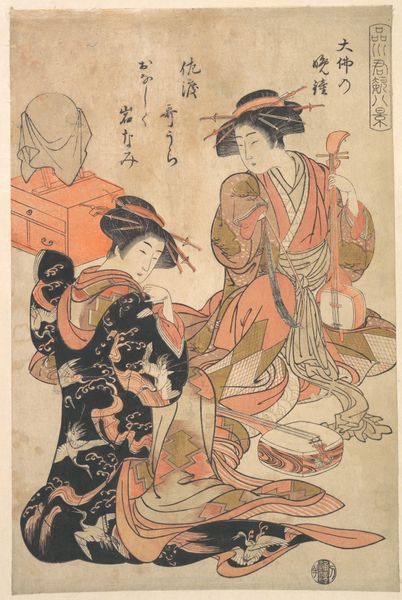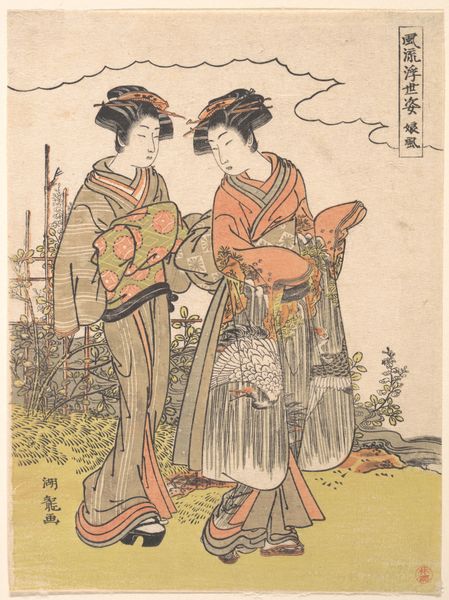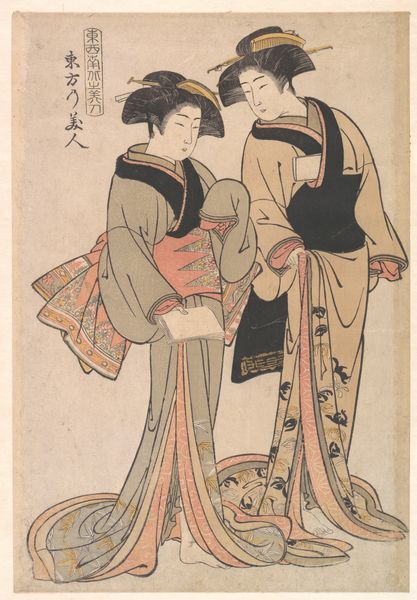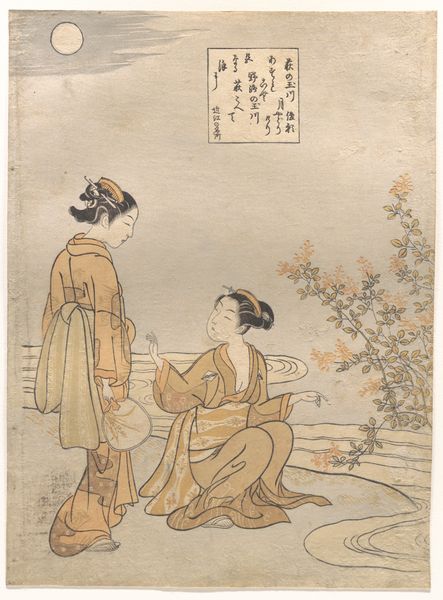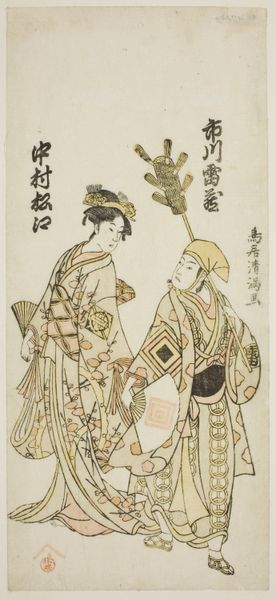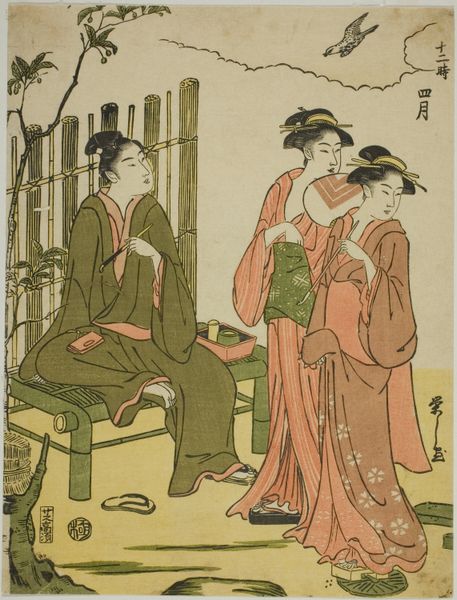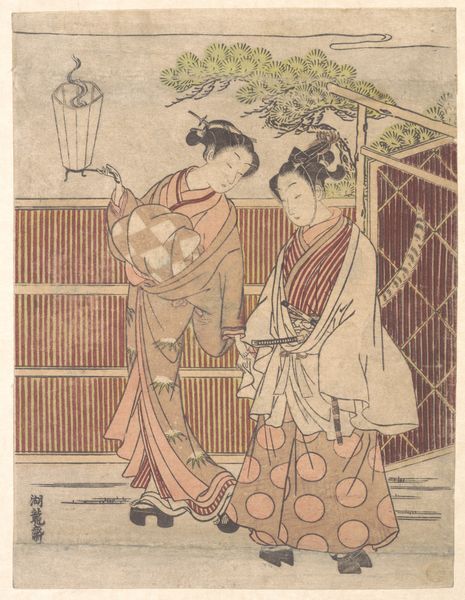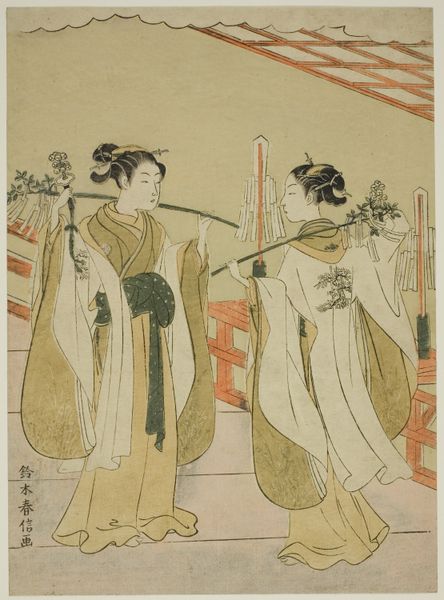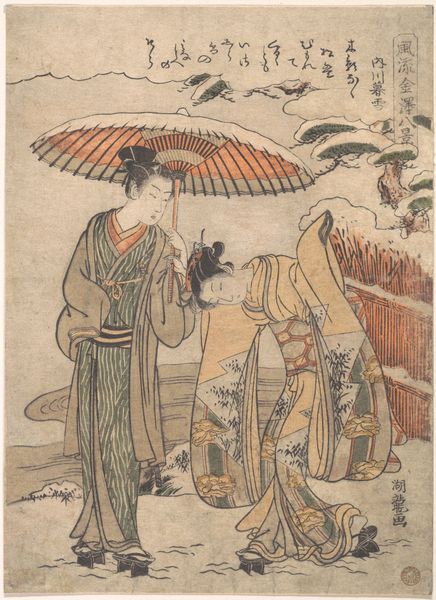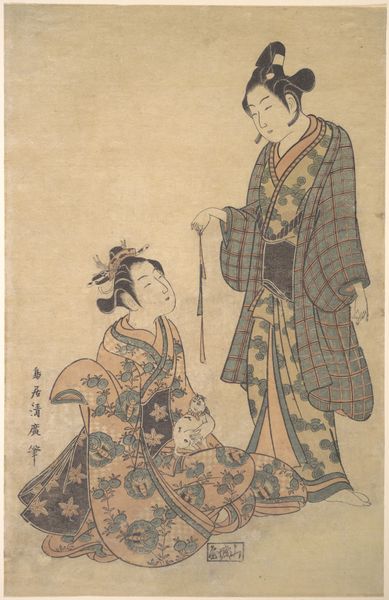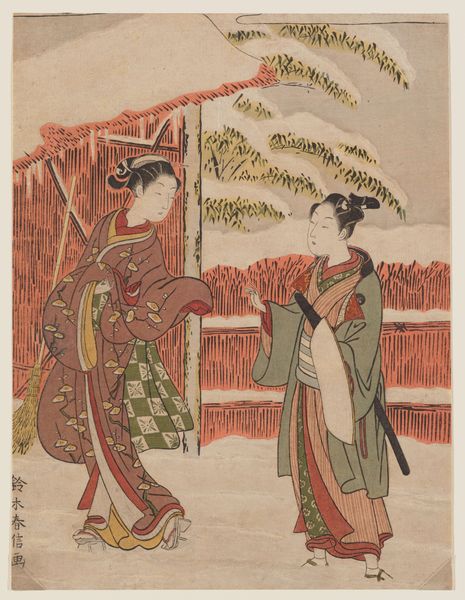
print, woodblock-print
#
portrait
# print
#
asian-art
#
ukiyo-e
#
woodblock-print
#
genre-painting
Dimensions: H. 8 1/8 in. (20.6 cm); W. 5 7/8 in. (14.9 cm)
Copyright: Public Domain
Curator: Here we have "Two Geisha," a Japanese woodblock print created by Isoda Koryūsai sometime between 1770 and 1790. Editor: It’s incredibly delicate. The limited color palette, primarily muted pinks and greens, gives the piece an airy, almost ethereal quality. Curator: Koryūsai was a prominent ukiyo-e artist, a style that flourished during the Edo period. His work provides valuable insights into the lives and social dynamics of urban Japan. Note the elegance, but also the performance implicit in the geisha's presentation. Editor: Absolutely, there's a stylized artifice to their poses and clothing. The flat planes of color emphasize shape and line, but the patterns in their kimonos offer textural variation and complexity, drawing the eye. Curator: These patterns are indicative of the period's fashion and status symbols. The arrangement and details are also communicating social messages, even subtle political stances in their dress at times. Editor: That's fascinating. From a formal standpoint, observe how Koryūsai creates a sense of depth despite the print's inherent flatness. The figures overlap, creating visual layers, and the subtle gradations of tone around their faces provide modeling. Curator: Prints like these were not only aesthetic objects, but also served as promotional material. The geisha depicted here, for example, likely belonged to a particular tea house or pleasure district and images circulated to increase their profile and entice patrons. Editor: The economical, almost calligraphic line work gives the composition structure and rhythm, but also hints at their expressive gesture in subtle curves. The arrangement of space really dictates how one's gaze travels throughout the entire piece. Curator: Thinking about the broader impact of ukiyo-e, one sees how these prints challenged and subverted societal norms and hierarchies. They served as conduits through which fleeting moments were captured, analyzed, and spread amongst the classes of Edo. Editor: Looking again, that understated beauty speaks volumes—a perfect balance of representation and artistry that I find refreshing. Curator: Yes, there's a unique balance and value embedded here, where visual appeal and socio-cultural context harmonize to reveal a glimpse into the intricate life of 18th-century Japan.
Comments
No comments
Be the first to comment and join the conversation on the ultimate creative platform.
